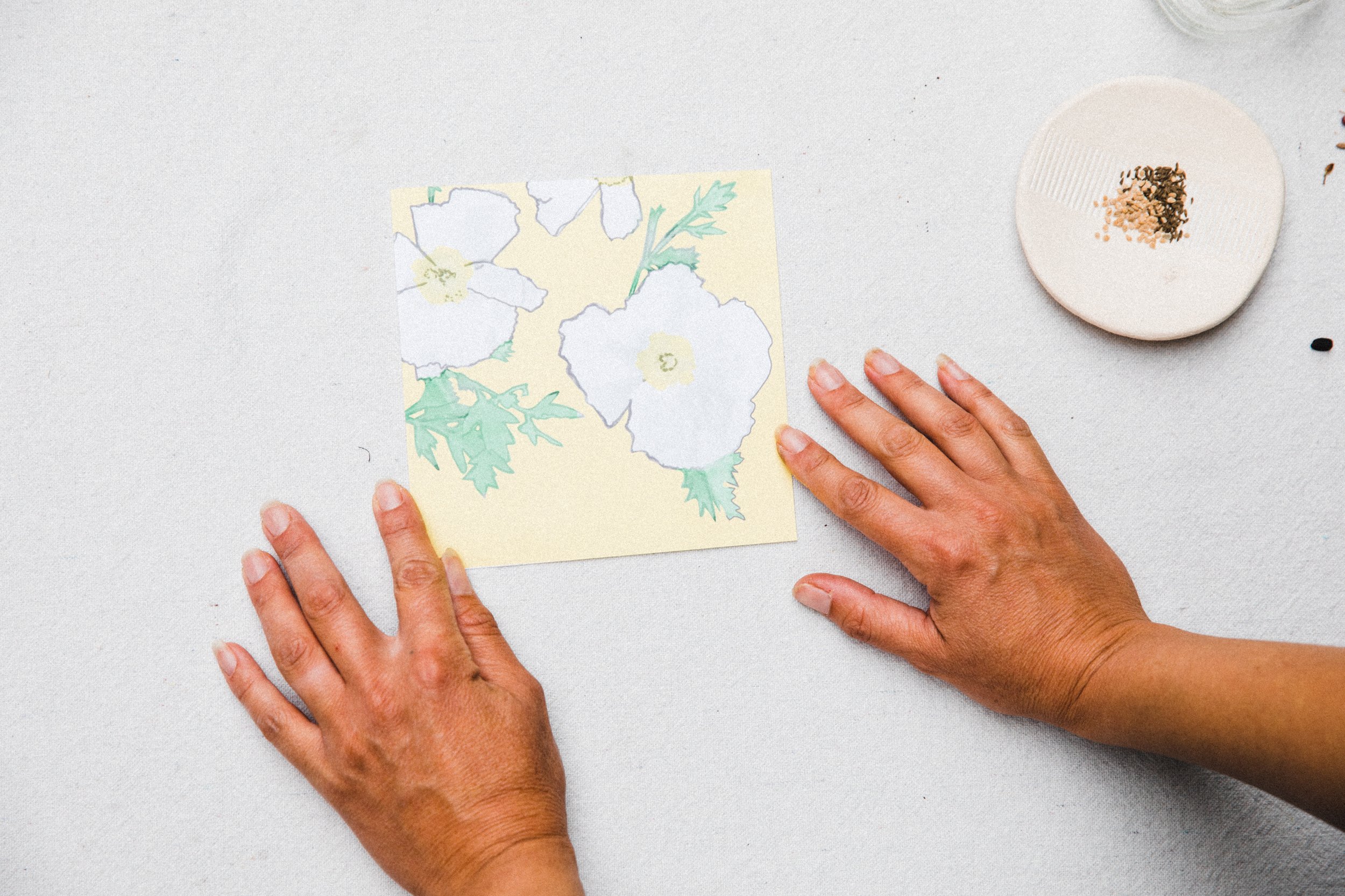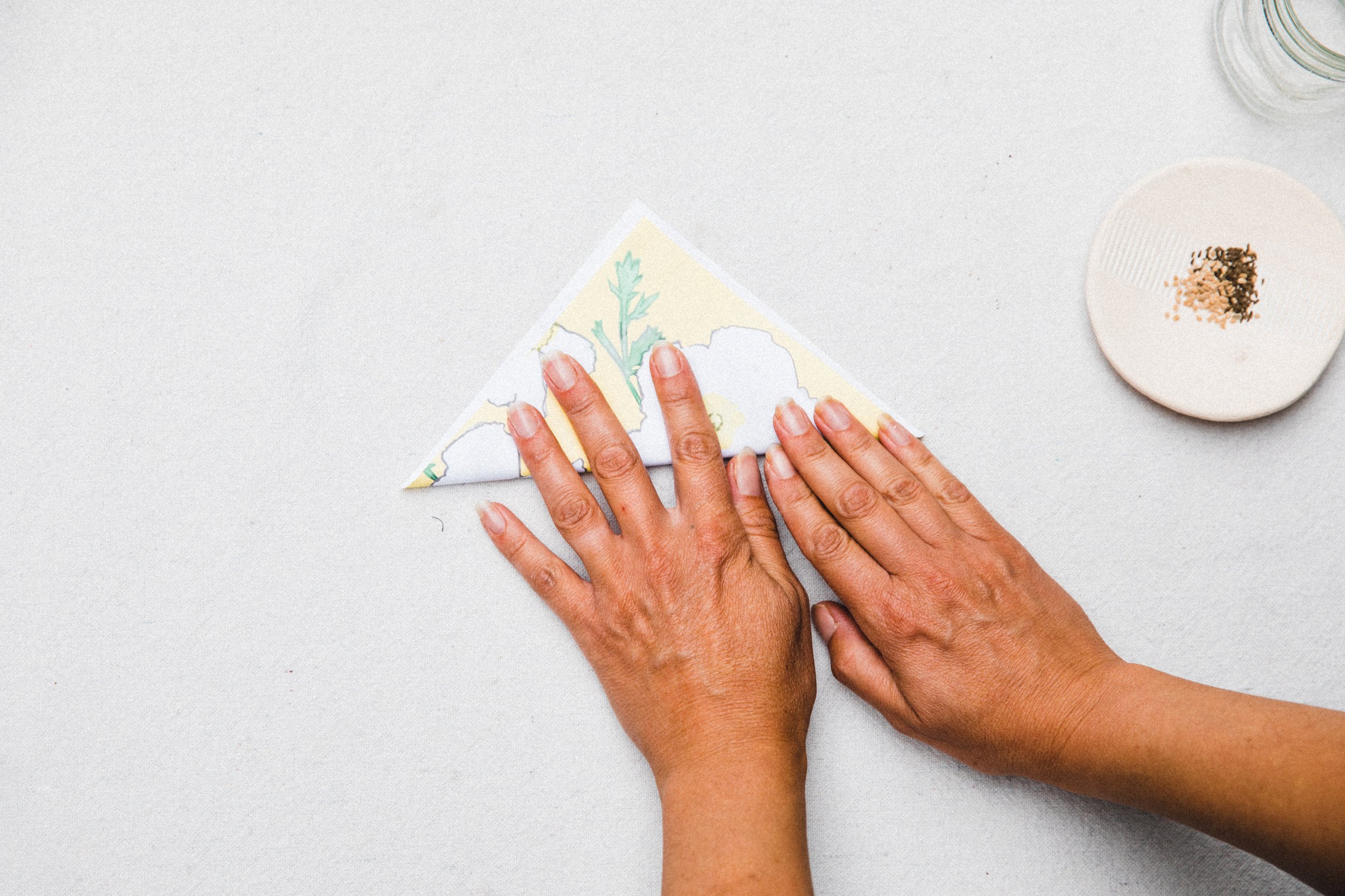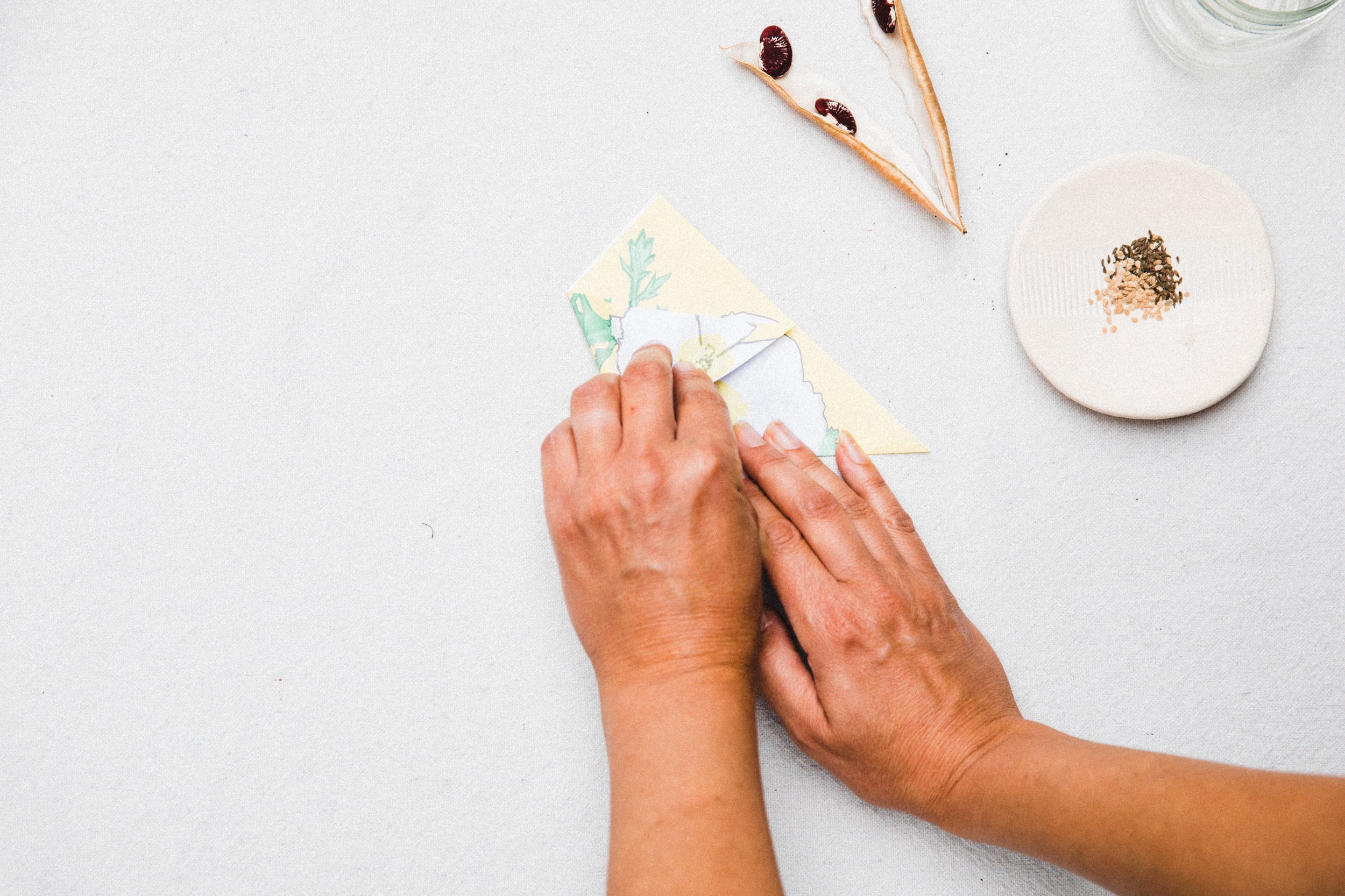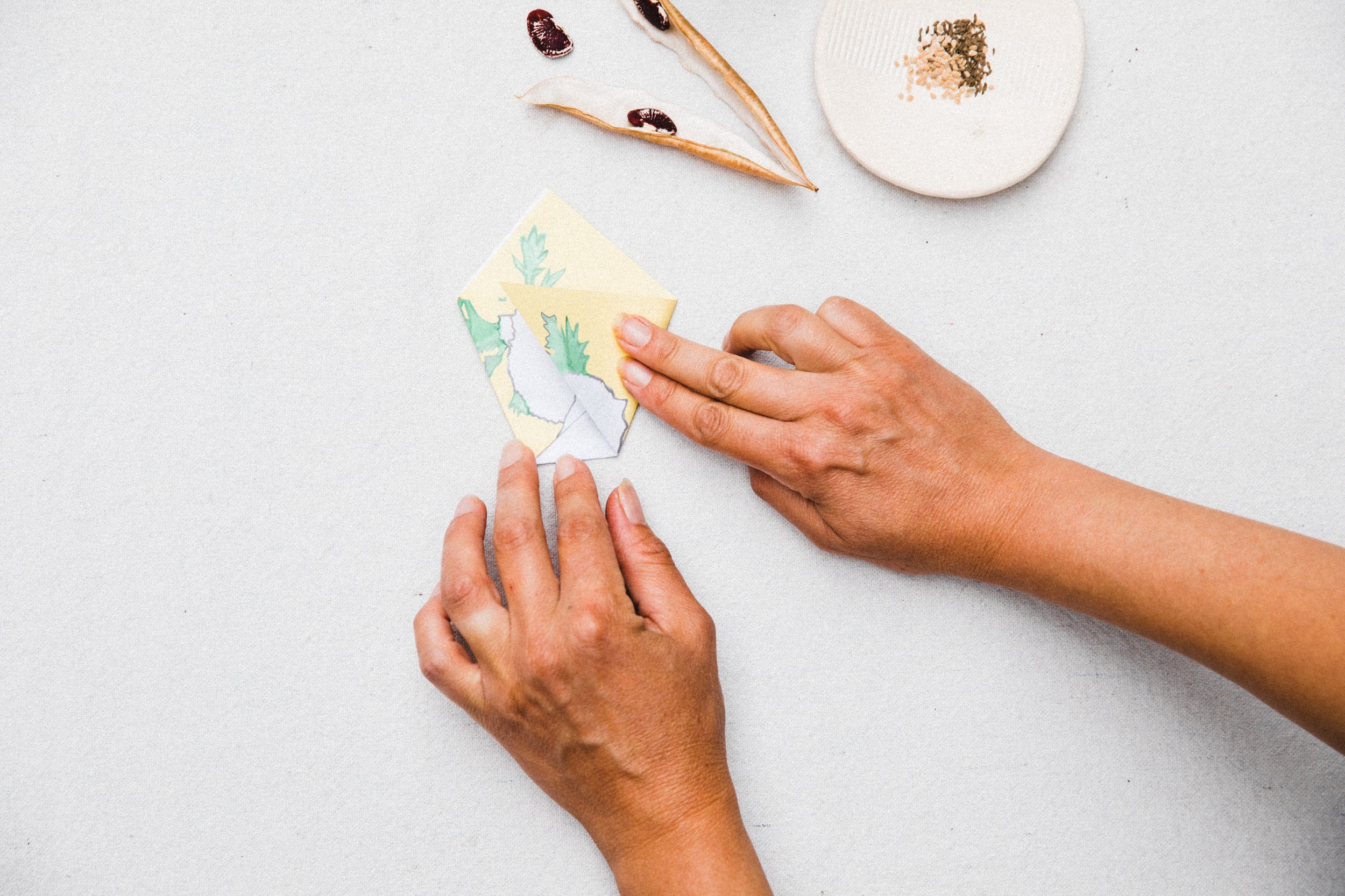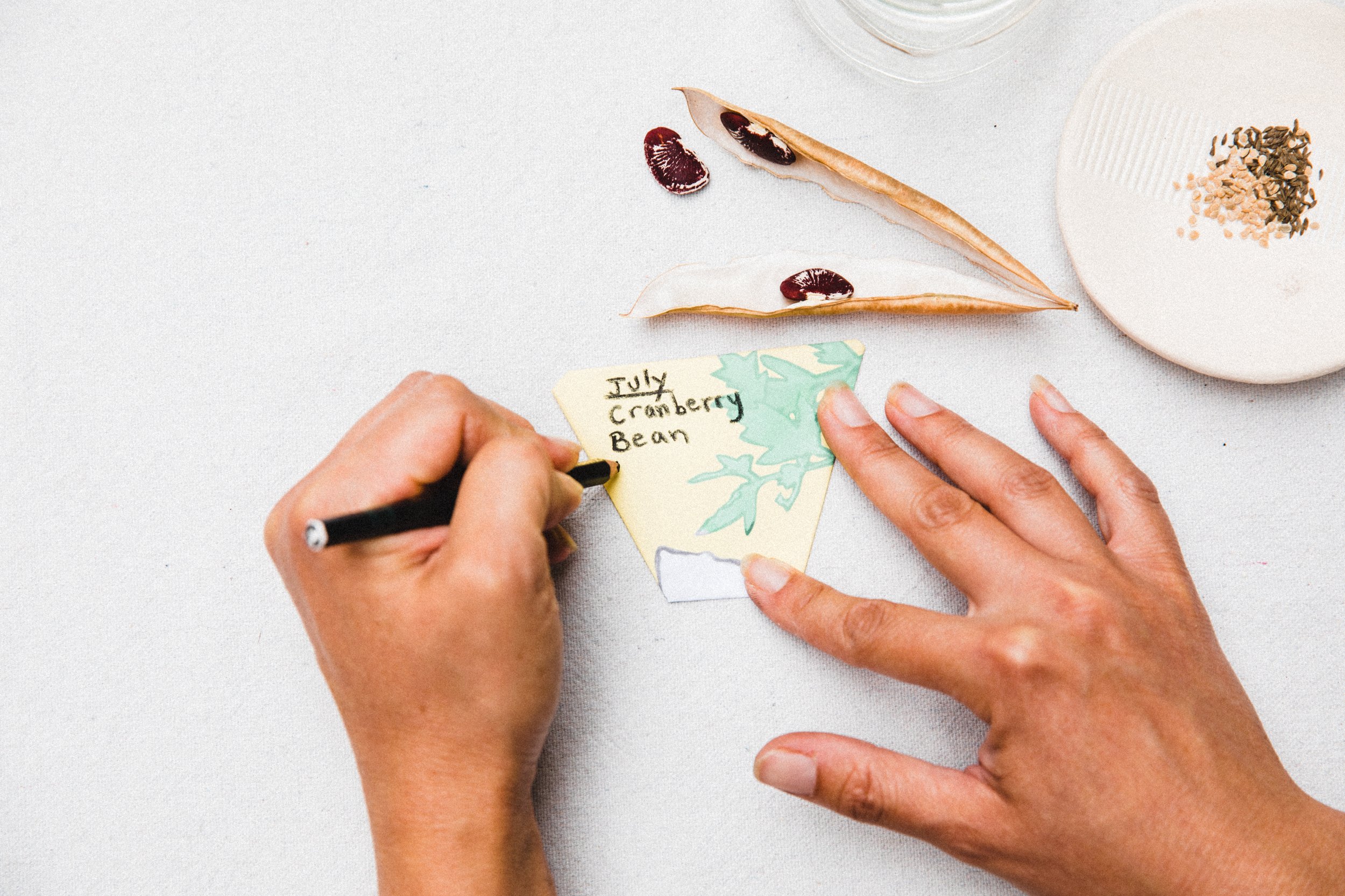Exploring Seeds
Dear THNC families,
Can you feel the slight shift of the seasons as the nights become cooler, the leaves turn yellow, and the plants swell with seeds?
These seasonal shifts are some of our favorite times of year as they provide opportunities for us to slow down and tune in with our bodies and our environment.
One way to help our family attune to the season’s change from summer to fall is by observing and exploring seeds. During this time of year, many plants set seeds and we can participate in this beautiful cycle by collecting the seeds to eat and to save for planting next year, as well as to share them with our family and community.
The Seeds We Eat
Seeds are all around us and we enjoy many of them in our food! The most common edible seeds we see on our plates are grains like rice, corn (maize), wheat, and oats. These grains are grass seeds and most cultures have had a very long history of cultivating grass as a staple food. Equally important to our diets are peas and beans, both of which are also seeds. And then there are tree seeds like walnuts, chestnuts, and almonds. And we also eat seeds in the form of spices like cumin, peppercorn, and mustard.
The next time you have a meal, take a close look to see how many of the ingredients are made of seeds. You’ll be surprised by how much seeds we eat!
Granola Recipe
Granola is a sweet, crunchy, and nutritious snack that is made mostly of seeds. You can involve kids with making granola to learn about seeds. Let kids help with measuring out the ingredients and touching and tasting each seed to explore the various shapes, sizes, and textures of seeds. You can also look up the pictures of the plant to see where each of these seeds come from.
Ingredients:
6 cups of rolled oats
2 cups of coconut flakes (coconut is a seed!)
1/2 cup each of 3 different seeds (sunflower seeds, pumpkin seeds, sesame seeds, chia seeds, etc)
1/2 cup of chopped nuts (walnuts, almonds, pecans, or pistachio)
3/4 cup of honey
3/4 cup of coconut oil
Optional add-ins: ½ cup of dried fruits like raisins, cranberries, or blueberries
Mix all the dry ingredients (minus the dried fruit) together in a big bowl. Melt the coconut oil and honey together in a sauce pot, then pour the liquid over the dry mixture. Stir and combine thoroughly. Spread thinly onto baking sheets and bake at 315 degrees for 10 minutes or until golden brown. Scrape the granola into a metal bowl and mix in the dried fruit. Allow to cool before eating.
Harvesting Seeds
If you are growing a garden, fall is a good time to collect seeds from your favorite plants so that you can grow more of them.
How and when to harvest seeds vary from plant to plant. The best way to gauge ripeness is by getting hands-on. Here are some signs to look for:
Swollen seedpods or dried flowers that have opened up and starting to drop seeds at the base of the plant.
Use your fingers to pry open seed heads or gently shake them into the palm of your hand. If you see dark brown and black seeds falling out, they’re ready. Green seeds generally mean they’re not quite ripe.
For fruits like tomatoes or squash, harvest the ripest fruit, then cut them open and scoop out the seeds. Tomato seeds need to be fermented a couple days (instructions here). Squash seeds can be gently rinsed and laid to dry on a paper towel.
Saving Seeds
After harvesting seeds, you’ll need to store them in a dry and cool place until spring time. Working together with your kids, make your own seed packets to save the seeds in. Make sure to label your packets with the name of the plant and the date.
This is a great opportunity to share stories about the seeds you are saving, what makes them special to you, and any particular memories you have of them. These seed packets are also handy for sharing with families and friends when you have more seeds than you need.
Make Seed Packets
Follow the series of photos below to fold a seed packet from a scrap piece of paper.
Sharing Seeds
Growing plants, saving seeds, and sharing seeds are all very deeply ingrained in all of us. All of our ancestors tended plants and stewarded seeds at some point in our lineage. That is why the experience of working with seeds can feel deeply fulfilling.
Sharing seeds is not only an exchange of knowledge; it can also increase genetic diversity, which builds resilience. Let’s say you grow a tasty bean your family enjoys and a friend gives you another bean variety that is their favorite. If you grow both beans together, the following year you will have a mix of both kinds, some of which will make beans with the best traits of both varieties (for example, vigorous plants that also taste good). This simple process, repeated over many generations, is how we have developed many of the food crops we have today. Plants grown from locally cultivated seeds also have the capacity to adapt to your region’s growing conditions and become better at resisting diseases and pests.
Sharing seeds is as simple as passing on your extra seeds to another gardener. This can be through a personal exchange or part of a larger community event like a seed swap. Be sure to label your seeds and give the freshest, most recently harvested seeds. Part of the joy of seed sharing is the exchange of stories & recipes – you might discover fascinating cultural info passed down along with the seeds. They are precious gifts!



